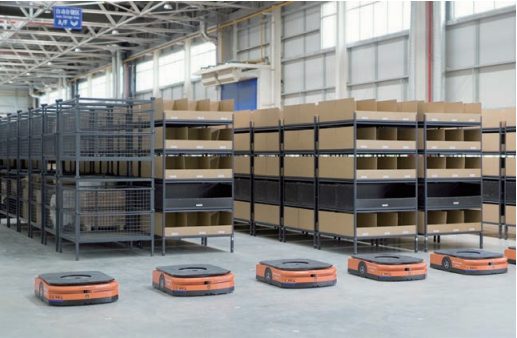The advantages of AGV intelligent storage system solution
633AGV intelligent storage system solution Using AGV trolleys to automatically transport pallets in narrow aisle shelf areas in automated warehousi...
DetailsSite Search

An automatic guided vehicle (AGV) is a handling robot equipped with automatic guidance devices such as electromagnetic or photoelectric, which can travel along a prescribed guidance path, with programming and mode selection devices, safety protection and various transfer functions. AGV has the characteristics of high degree of automation, safety and flexibility, so it is widely used in automatic production and storage systems such as automobile manufacturing and mechanical processing. The AGV robot is used in the three-dimensional warehouse unit of the flexible manufacturing system. It adopts the photoelectric guidance method to detect and control the correct movement direction in real time. So as to realize the automatic handling of materials in the digital workshop.
The three-dimensional warehouse module in the flexible manufacturing system needs to carry out operations such as handling, warehousing and delivery of blanks, semi-finished products and finished products. AGV robots can easily realize automatic exit from loading and unloading stations, workbenches and shelves, etc., and fully adapt to the requirements of high flexibility, large logistics flow, and complex handling lines. The AGV robot is used as a stacker in the flexible processing production automatic three-dimensional warehouse site. The main operation process is as follows.
(1) Warehousing: A certain station on the entire flexible manufacturing system puts forward clear requirements for warehousing to the system. These requirements mainly include the name and quantity of components, etc. After the system responds, the host computer sends the AGV to the industrial computer through the wireless network. Issue an instruction to clearly notify the AGV robot to move the parts to the corresponding warehouse.
(2) The AGV robot grabs the parts from the loading and unloading station, and plans the motion path according to the current state, position, task, etc., runs to the corresponding warehouse, and stops exactly.
(3) The AGV robot automatically places the parts into the corresponding bins according to the target position.
(4) The AGV robot sends the current position and status to the upper computer through the wireless network; the upper computer updates the database according to the current status.
(5) Outbound: The system notifies the AGV robot in the form of an instruction to take out parts from a specific warehouse in the warehouse to the loading and unloading station.
(6) The AGV robot grabs the parts from the specific rack of the warehouse, plans the movement path according to the current position, runs to the loading and unloading station, and stops exactly.
(7) The AGV robot automatically places the parts into the buffer of the loading and unloading station according to the target position.
(8) The AGV robot sends the current position and status to the upper computer through the wireless network; the upper computer updates the database according to the current status.
Repeat the process of (1)~(8) continuously. agv trolley agv forklift
AGV intelligent storage system solution Using AGV trolleys to automatically transport pallets in narrow aisle shelf areas in automated warehousi...
DetailsIt is not news that manufacturers around the world are feeling the pressure to keep up with the high demands of the market. A scarce labor market, ...
DetailsWelcome visit us at H25, Tilog-Logistix 2023 17-19th Aug at BITEC Bankok Thailand (Jiangsu Yikong Intelligent Equipment Co., Ltd.)
DetailsThis website uses cookies to improve your browsing experience. By continuing to use this site, you accept the use of our cookies.
Data collected from this website is processed and stored in the United States.
See Our Privacy Policy
Hello!Please login